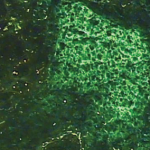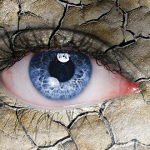Several years ago, I was quite interested in the positive results shown in the fatigue level among patients with systemic lupus erythematosus who were receiving rapamycin and a murine model of SS.1,2 Knowing that there were several issues that needed to be addressed, I did a quick Google search and found that the target for rapamycin is mTor. This molecule is also a critical target for drug development in patients with neuropathy as well as depression.3
Another Google search revealed that an analog of rapamycin had been created by a San Diego–based pharmaceutical company, and that this compound lowered elevated lipids, a very significant issue for patients with lupus and patients with SS. It had been developed and had already undergone phase II trials for potential treatment in MS with good safety results. However, the division that created this analog was subsequently eliminated by this particular pharmaceutical company.
Since a number of physicians who had worked at Scripps Memorial Hospital had migrated to this large pharmaceutical enterprise’s division in San Diego, I eventually found a former member of the now-extinct transplant team who told me that the compound had been licensed to someone else for research related to aging and that nothing more could be done.
Another potential class of compounds with both immunologic and neurologic properties is AKT inhibitors.4,5 I found several compounds that improved fatigue and pain symptoms in development for ulcerative colitis; however, they were being developed by the gastroenterology and neurology divisions of the pharmaceutical company. As such, the compounds were not in the scope of the immunology division unless they proved successful in ulcerative colitis.
Although the company in San Diego was interested in SS research, they wanted an anticytokine biologic molecule. I am not a specialist in drug design or bioinformatics, yet it took only a few moments on Google to locate at least two candidates. Indeed, this experience in trying to identify candidate drugs for SS did stimulate me to write this article to encourage better cooperation between the neurology and immunology divisions at both the clinical and drug-development levels.
Pathogenesis of SS
Primary SS (pSS) is a systemic disorder characterized by dryness that is attributed to lymphocytic infiltrate of lacrimal and salivary glands.7,8 Further, patients with pSS have characteristic antibodies against SS-A and/or SS-B antigens.9,10
There is a misconception that the lymphoid infiltrates lead to progressive destruction and fibrosis of the glandular tissue. However, this view does not really fit the observation that minor salivary-gland biopsies from patients with pSS only have about 50% destruction of the acini and ducts, even in patients with long-standing disease and severe objective dryness. Further, the number of lymphocytic foci does not seem to increase with time, even though many patients note increasing sicca symptoms. The symptoms of dryness and myalgias may increase independent of biomarkers such as ESR, CRP, immunoglobulins, or a variety of cytokines.


